Women Are Here To Fish
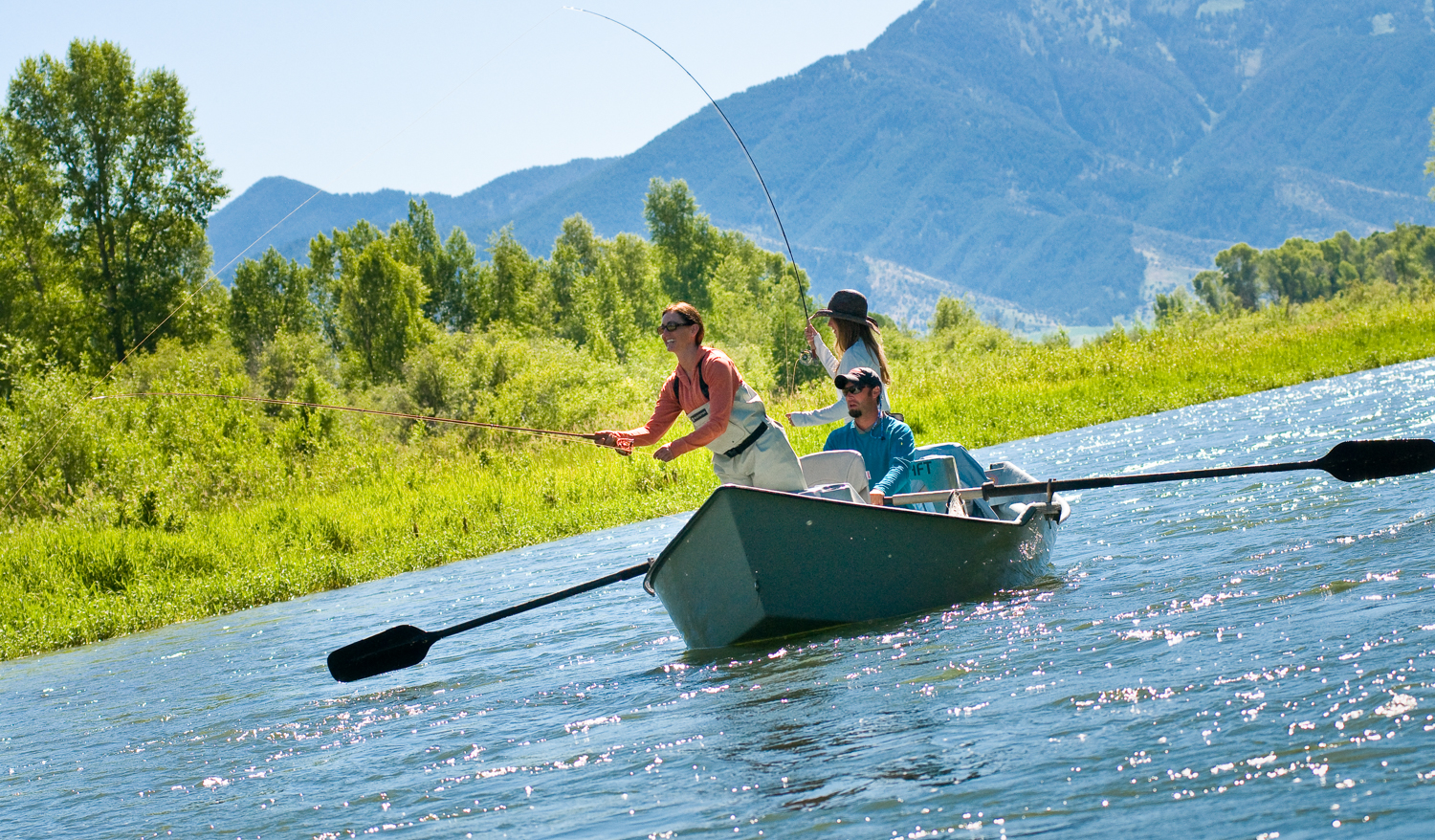
By Justin Pickett
I read a post on social media the other day that got me feeling all kinds of frustrated.
I literally wanted to pull my hair out after reading the remarks of the ignoramus who decided to peck this stupidity from the safety of his keyboard. This ding dong’s remark was in response to a photo of a nice rainbow trout caught by a female angler, which was posted to her Facebook page. The original post appears to have been taken down by the page administrator, but it went something like this:
-Now let’s see a video of your cast, drift, and you landing that fish-
Now, like I said, there is likely some variance to the actual quote, but those are the “items” that this guy wanted filmed to verify to him that this female angler was competent enough to catch a trout all by herself. Seriously? He went on to defend his request, which just made things worse.
The majority of the social media world attacked this guy, and rightfully so. Who is he to play “river police” from the comfort of his desk chair, assuring that everyone’s cast and drift are up to his standards? Oh wait… Not EVERYONE on the river. Nah, this guy probably would not have had the balls to do the same thing to another male angler, but a gal holding up a trout….I guess that sounded like easy pickings to this Facebook Casanova.
Certainly a girl doesn’t have the mental and physical attributes to complete a cast, mend some line, set the hook, and land a fish that possesses a brain the size of a pea. I’m not trying to downplay the sometimes technical aspects of fly fishing for trout, but this guy was definitely calling into question the ability of this female angler to catch a fish. However, I bet if the same were expected of him every time he posted a fish, he would be the first one to cry about it on his social media page.
News Flash: women fish!
Women fly fish. There have been women in fly fishing for a long time. Long before many of you reading this, and myself, were even conceived. There are some amazing women who have done, and continue to do, amazing things in many areas of the sport of fly fishing. Conservation. Guiding. Travel. Product development. Instruction. Casting for Recovery. Dun Magazine. Abel Women. 50/50 On The Water. I could go on. Women play a major role in many aspects of our sport. I could give numerous examples, but here’s a couple:
Ever heard of R.L. Winston Fly Rods?
Read More »Tarpon of Cuba: 3 Tips For Success
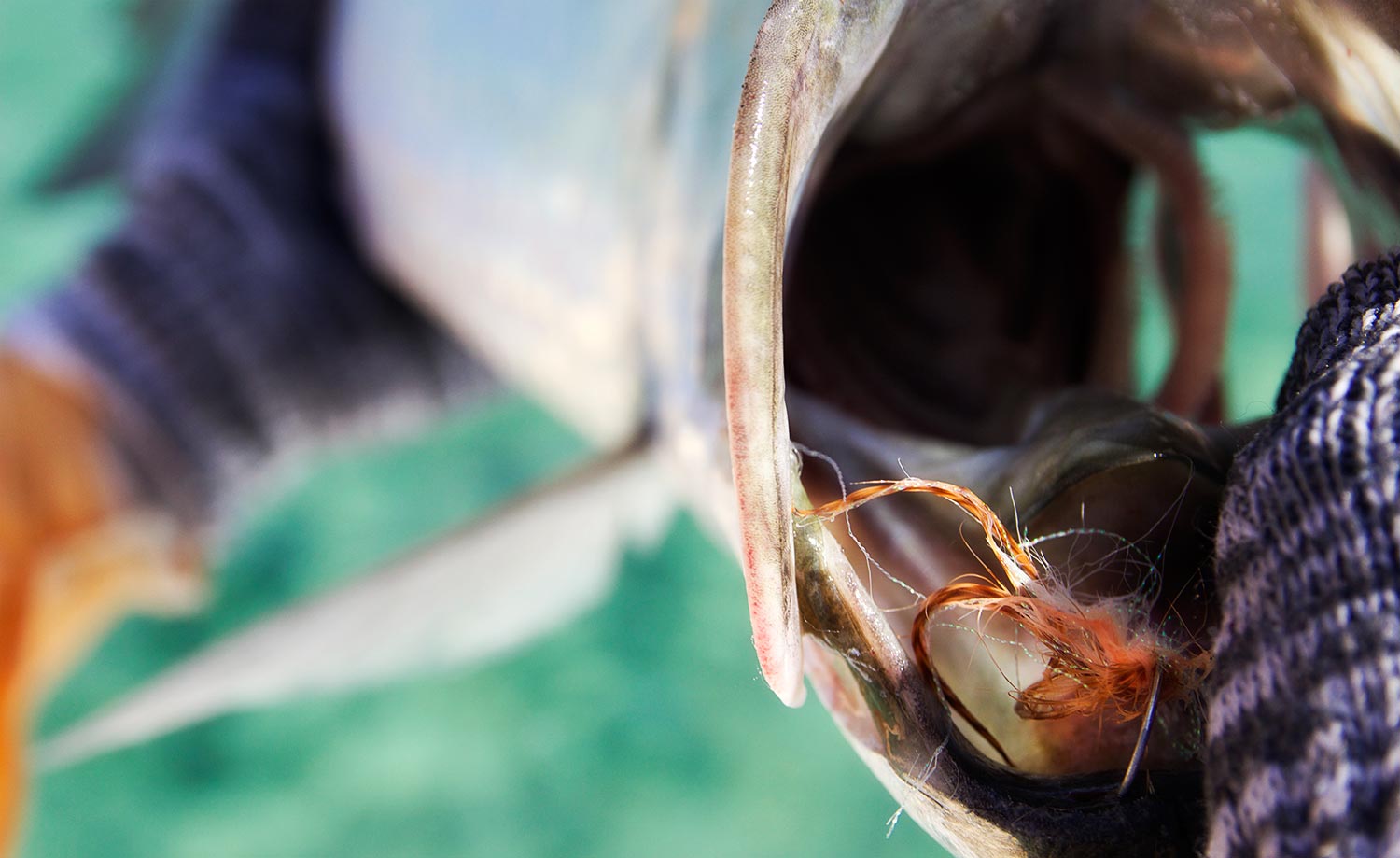
By Dan Frasier
I think what surprised me most was that they still looked like fish.
The dark shapes sliding below the surface were intimately familiar despite their legendary status, but the vastness of the flats and channels of Jardines de la Reina off the coast of Cuba seemed to put their size into perspective. The sabalo, Spanish for tarpon, looked natural. Why this surprised me, I don’t know. Perhaps it was the hours of videos I’d watched with monster fish exploding from the water. Or the gallons of ink I’d poured over about the silver king. The grandness of these fish left me anticipating something otherworldly. Where I’d expected to find a tiger in my living room, I’d instead found it in the jungle, where it fits.
From the bow I see the shape quartering toward the boat from 2 o’clock and all of the advice I’d sought in the previous weeks just sloughed away. Eighty feet and moving lazily toward us was simply another cruising fish. One false cast and I shot line to intersect it’s path at 70 feet. A few strips and the fly is in position and very slowly sinking. As the tarpon approached I give it two slow pulls. The calm and lazy shape tenses and snaps its head to the side and all of a sudden I’m holding a live wire and thinking, “Hit him as hard as you can.”
The entire process was strangely familiar to me. Despite having never chased tarpon before, the situations were much like I’d experienced in other saltwater situations and in my carp fishing. See the fish (something that takes training), cast quickly because you may only get one shot, intersect the fish, and don’t make it work too hard or do anything unnatural to eat your fly. Simple, but not easy.
Now don’t get me wrong, I’m still nothing more than a Middle School level tarpon fly fisherman. In the long calls I’d had with real tarpon Phd’s, I’d been given all kinds of tips, information, and strategies on how to address these fish in all of the more difficult situations. This was the kind of information that allows the experts to hook them when you can’t, or hook a higher percentage of his shots than anyone else on the water. Great stuff and extremely helpful when you are trying to take you tarpon game to the next level. But as a rank amateur, I was trying to take my tarpon fishing to ANY level and remembering and implementing these PhD level techniques in the heat of the moment was more than my tiny brain and lack of muscle memory could handle. And yet, I still managed to catch a number of fish, by leaning on what was familiar to me. Here are a few things I learned.
1. They are still fish and it’s still flats fishing.
I had built the idea of chasing tarpon up so much in my head that it felt like I was attempting to do the impossible. Go catch one of the baddest ass fish in the world on a fly rod with no prior experience and in a limited number of days. I’d put so much pressure on myself to convert on this opportunity that I’d nearly psyched myself out. I called everyone I knew with insight into tarpon fishing, talked to people about fishing Cuba (like it was fishing on Mars or in zero gravity), and read and studied like a madman.
All of this preparation was good. It helped in a lot of ways, but
Read More »The Original Eyewear For The Flats
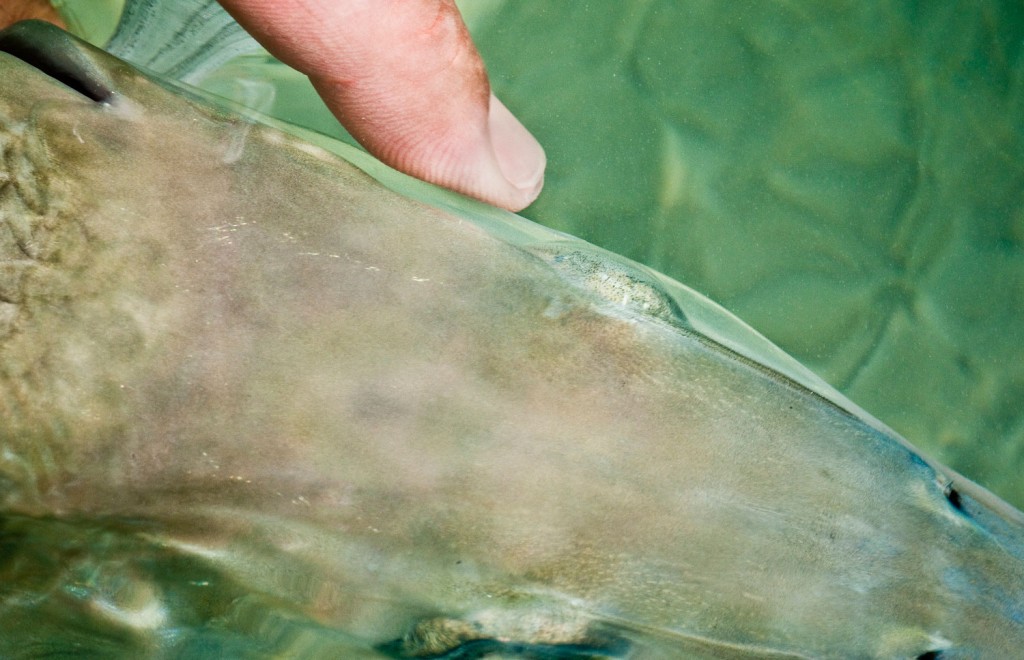
Bonefish are just cool. They never cease to amaze me.
Like all fish, they are perfectly adapted to their environment and in their environment you need a competitive edge. Right in the middle of the food chain, the bonefish has to get in, get fed, and get out in a hurry, before he becomes somebody else’s lunch. To do that, he needs keen eyesight, a hard nose, a turbo charged tail stroke and some high-tech eye wear. I handled hundreds of bones before I ever noticed the eye glass, and a few more before I captured a good photo of it. It’s so clear and flawless that the light and the angle you look at the fish need to be just right to see it. It is a slick outer lens that covers a good portion of the bonefishes face and encapsulates it’s eye. If you study it’s profile you will see that it turns the bonefish’s already sleek profile into a perfectly hydrodynamic projectile. The equivalent of cycle racers shaving their legs.
No doubt, this aids in the bone’s remarkable speed, but that’s just part of the story. The eyeglass serves a much larger purpose. The bonefish has a fairly unique style of feeding. When he spots a crab or a shrimp and makes his charge his prey seeks cover in the coral, or deep in the mud or sand bottom. The bonefish gives chase by
Read More »2 Lessons I Learned from My Bahamian Guide
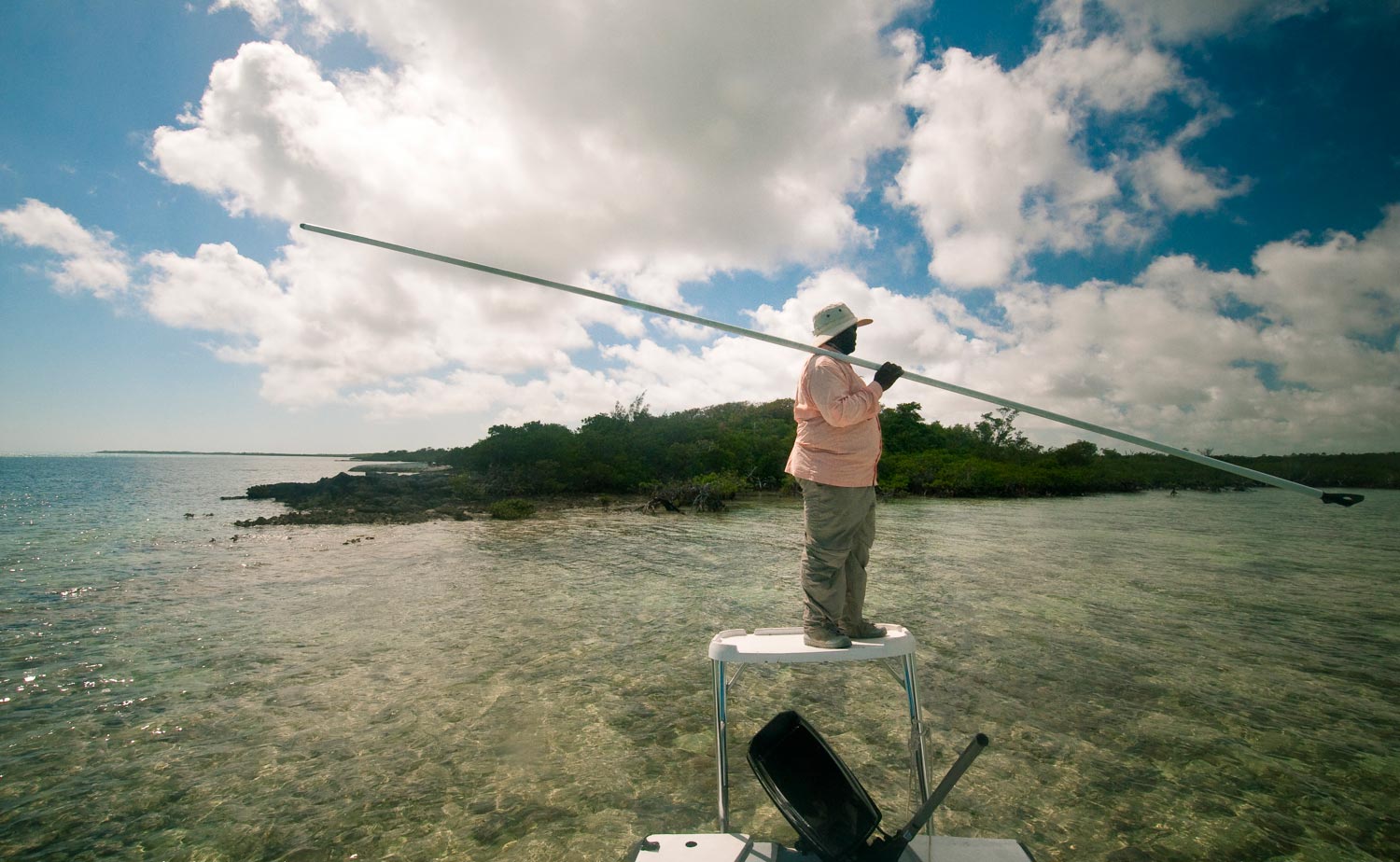
Most of you know that Louis and I recently spent a week in paradise fly fishing for bonefish in the Bahamas.
It was an amazing trip, providing me by far the best bonefishing of my life. I gained a wealth of knowledge during my stay, mostly saltwater angling skills, but what I really ended up cherishing when it was all said and done was the two guide lessons my veteran bahamian guide Freddie taught me.
Read More »Tandem Tactics for Trout Part Two: Below The Surface
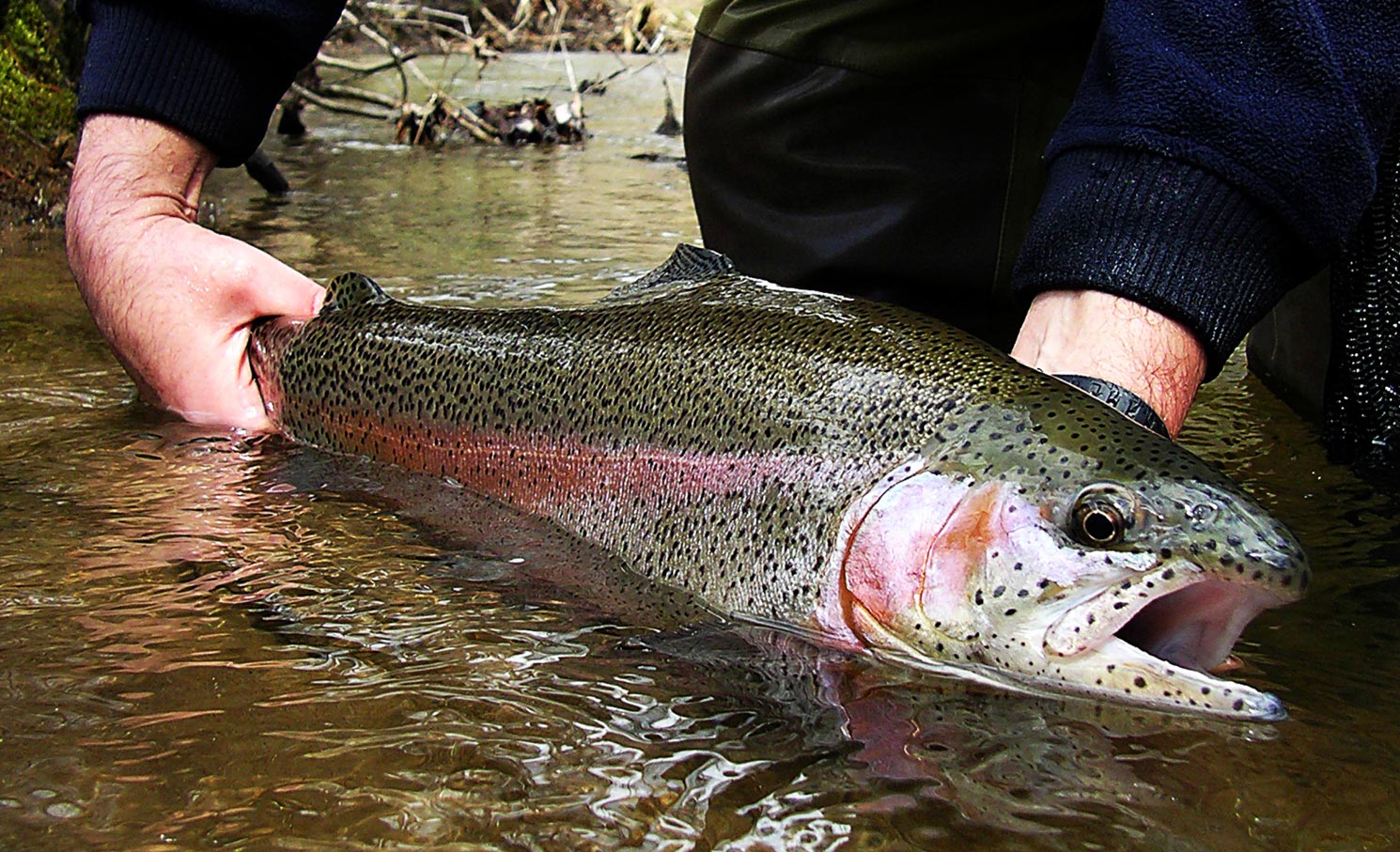
DRY DROPPER SET UPS ARE ONLY THE BEGINNING. SOME OF THE MOST EFFECTIVE TEAMS RUN DEEP.
Tandem nymph rigs are hands down the most effective way to catch trout. Let’s leave behind the aesthetic arguments about dry fly fishing for the minute, there’s a reason that all competitive trout fishing is done with teams of nymphs. It works and it will increase your numbers.
There are a host of ways you can choose to fish nymphs. I’m not going into the details of Czech Nymphing vs. French nymphing or Merican nymphing, but I will include some links at the end of this article. For now I’m going to focus on choosing and rigging nymphs that work effectively as teams.
Rigging
There are two common ways to rig tandem nymphs. The simplest and most commonly used for indicator set ups is to tie the dropper off the bend of your lead fly’s hook. Sixteen inches of tippet between the flies is a good average length. You might assume that the dropper would fish sixteen inches deeper than the lead, but that’s not the case. It all depends on the distribution of weight.
It is pretty common to fish a weighted lead fly with an unweighted dropper. This team will fish at about the same depth. This tactic offers the fish two choices at the same depth. If your goal is to fish different levels of the water column, you must use a weighted dropper or a split shot four inches or so above the dropper. An unweighted dropper with a split shot will have better action but is a little more maintenance and can compromise your tippet strength. The difference in depth between the two flies will only be about half the length of the tippet which separates them so you may want to go longer than sixteen inches, depending on conditions.
This is the setup I use most commonly
Read More »The Mental Game of Permit and Steelhead Fishing
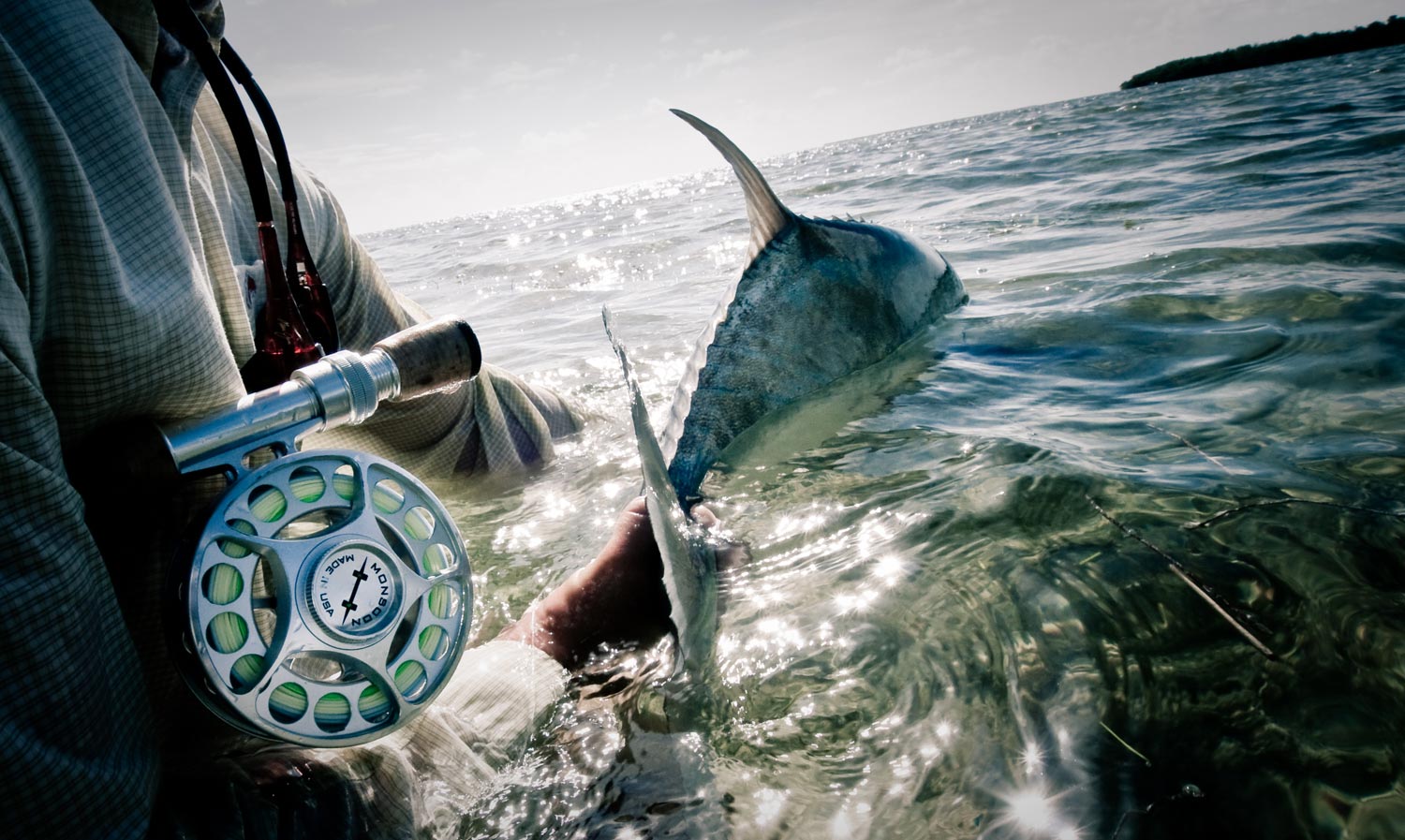
By Tucker Ladd
I will be the first to admit it — I have a permit fishing problem.
While that is a hard enough itch to scratch, living in the urban wilderness of Denver, CO, I have also developed a bit of a steelhead fishing problem in recent years. While more often the idea of standing on the bow of a flats boat supersedes the thought of standing waist-deep in 40 degree water, the satisfaction of hooking either fish is something that seems to haunt me daily.
What I have always loved and appreciated about fishing for both permit and steelhead is how these fish challenge, reward, and break you as an angler. But it’s not just what these fish do to the psyche of an angler that makes pursuing them similar. There are also similarities in the practice of trying to catch one of these elusive fish on a fly.
IT’S ALL A MIND F*&#
Let’s face it, there’s a lot of “down time” when fishing for either of these species. By “down time” I mean the duration of time spent in between catching either fish. Now sure, there are those epic days when one may hook, and even land multiple fish in a day, but these days are certainly few and far between.
Any normal day of fishing for either species requires a mental toughness, to not only get through the down time, but stay focused, alert and always ready for when the fish eats (steelhead) or presents itself (permit). Any angler who has regularly pursued either fish has their own technique or methodology for working through this mental challenge. And let’s be clear, it is a tremendous challenge.
Day 1 is always easy. You’re fresh on the water, the possibilities are endless, and you’ve got that feeling of “this is the day!”
Day 2 you’re feeling challenged, but the previous day’s fish sightings or bumps are keeping your energy up and your attitude in check. Even if you didn’t see or feel any fish, the “newness” of the experience is keeping you going.
Day 3 can go a couple of different ways. Scenario 1 is
Read More »Trust The Boo
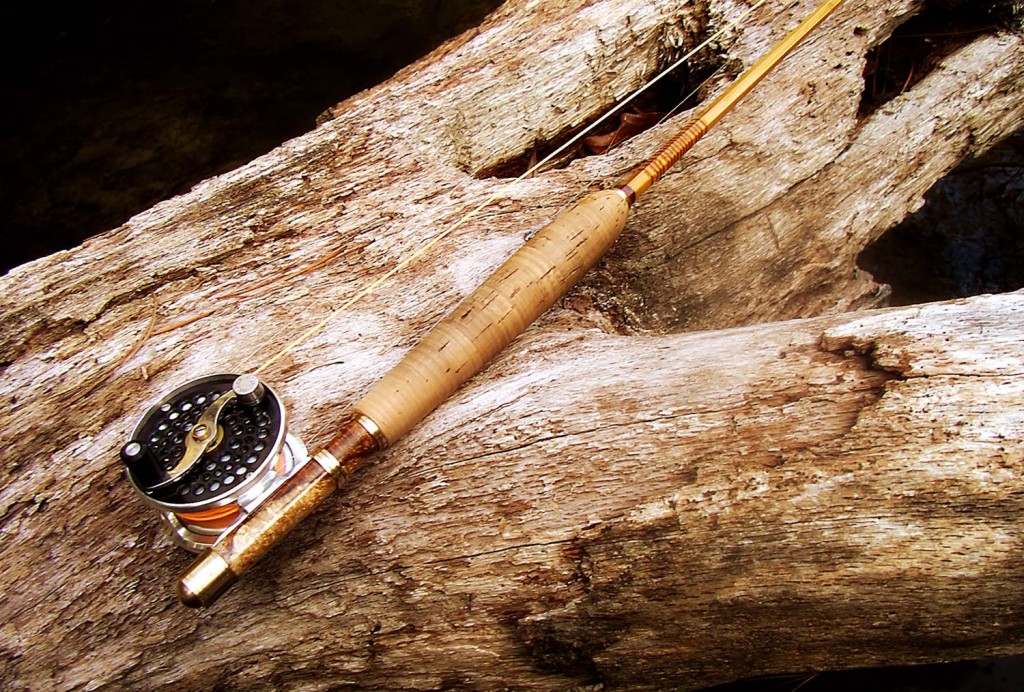
I’ve fished bamboo rods my whole life and I’ve made my own for the last twelve years or so.
I can’t tell you how many times I’ve been asked if I was afraid to fight big fish on a bamboo rod. The answer is no. I’ve broken my share of rods but only once did I break one fighting a fish and that was totally my fault. I’ve landed more fish over twenty inches on bamboo than I can count, a few pushing thirty. The two fish pictured were both landed on a seven foot four weight. The tip on that rod measures only thirty thousandths of an inch in diameter but it handled those monsters just fine.
A 27″ Hen and a 28″ Male Both Landed on the 4 Weight
Bamboo is a remarkable material. When properly heat treated it has amazing strength. Traditional Japanese carpenters use bamboo nails cooked in a wok and high rise construction all over Asia is done on bamboo scaffolding. Do bamboo rods break? Of course they do but a well made rod is much stronger than you would guess and if properly handled and cared for it will take whatever a fish can dish out. I’ve heard it said that fisherman break rods, not fish, and I think that’s true. With that in mind, here are some tips on how to keep that cane rod fishing for many years.
• Treat it right. Bamboo doesn’t take a lot of maintenance but there are some things you should think about. Rot is a death sentence for a cane rod. Rod makers spend a lot of time on their finish and it can last a lifetime but it’s not bulletproof. Never put a rod away wet. This is the most common mistake guys make with their rods. When you put a rod in a tube with an o ring seal any moisture on that rod or it’s sock is in there until you open the tube again. That gives moisture plenty of time to work through the finish and into the wood. I set mine out on the mantle in the sock overnight before storing them. The second big finish mistake is leaving the rod in a hot car. If you leave that rod tube in the sun in a hot car the finish will bubble and no longer protect the cane. If you have to leave a rod in the car keep it in the shade and take the cap off for ventilation.
• Ovoid physical traumas. A bamboo rod will bend like grass in the wind. What will break it is sudden physical trauma. For example, trying to rip a fly out of tree leaves with a brisk casting stroke, as I watched a good friend do with my rod once, works every time. Running the tip headlong into a tree while hiking in doesn’t help. Hitting the rod with
Read More »The Double Haul
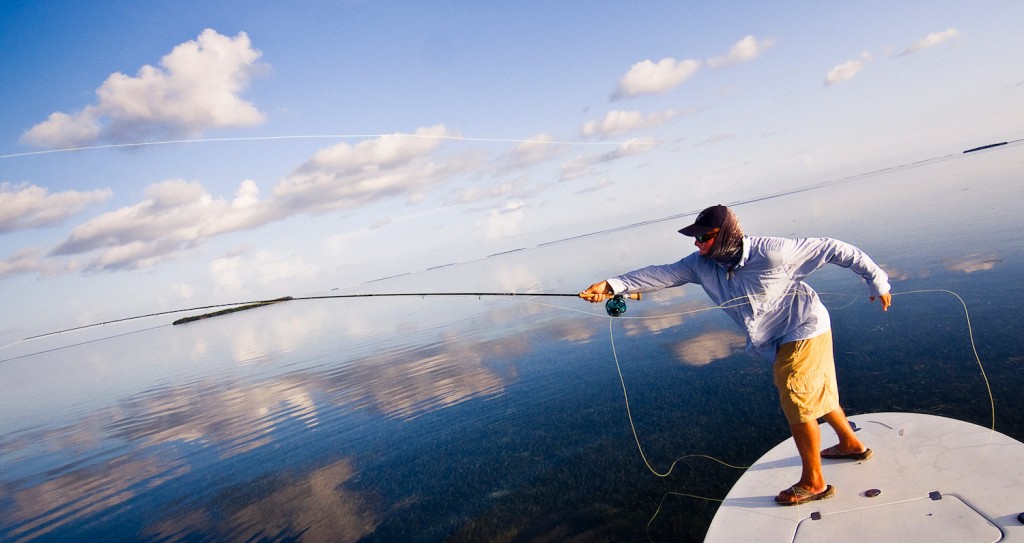
A good double haul is curtail wherever you’re fishing.
Never more than in salt water. A lot of anglers, however, find it mystifying. Here’s Capt Joel Dickyto explain how you can have a great double haul.
WATCH THE VIDEO!
Read More »Tandem Tactics for Trout. Part One: Touching The Surface
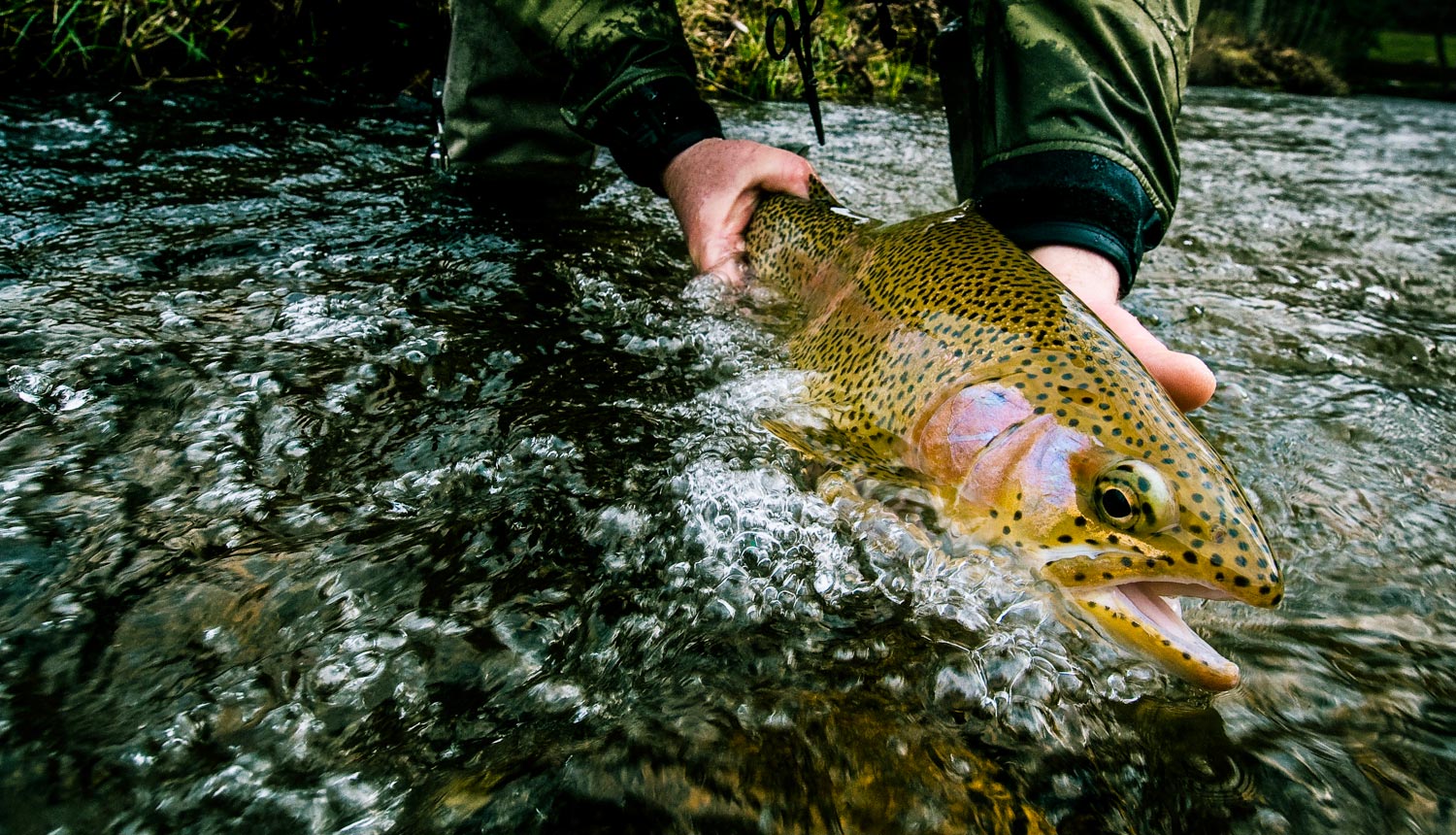
FOR A WHOLE LOT OF REASONS, TWO FLIES ARE BETTER THAN ONE.
There’s nothing new about fishing teams of flies. European fly anglers have fished elaborate multi-fly systems, called casts, for generations. Most serious trout anglers here in the US regularly fish two or three flies, where regulations allow. Still, there are many anglers who resist this technique. These anglers are often intimidated by casting a team of flies and, perhaps more often, just not sure what to tie on.
Nymph rigs, with split shot and indicators, are a challenge to cast but the second fly is really not the problem. When the setup tangles, the split shot is generally the culprit. If you are comfortable casting split shot, you will likely not have trouble with the extra fly but if you are still concerned, consider replacing that split shot with a weighted nymph. A tungsten bead or some lead on the hook shank can sink your setup as effectively as shot and may catch a fish.
My nymph rigs almost always include two or three nymphs and at least one split shot. Yes, like everyone else who owns a fly rod, I occasionally get a tangle. I’m pretty good at getting them out and adhere strictly to the two minute rule. If it’s going to take more than two minutes to untangle, I cut my flies off and re-tie.
There are a couple of things you can do to reduce tangling with weighted set ups. Tangles usually result from slack in the system. Slow your cast down and focus on making nice clean loops. The smooth application of power and abrupt stop are never more important. In truth, most tangles do not form in the cast itself but are due to a failure to control your line while not casting. Fish often help with this. Missing a fish on a small trout stream often ends in tree climbing. Be conscious of you rig as you move from spot to spot and set up to cast. This will cut out a lot of the birds nests.
Dry Dropper rigs
The most commonly used team of flies is the dry dropper. There are two common strategic ways of looking at this technique. The first is
Is Our Thinking About Flies All Wrong?
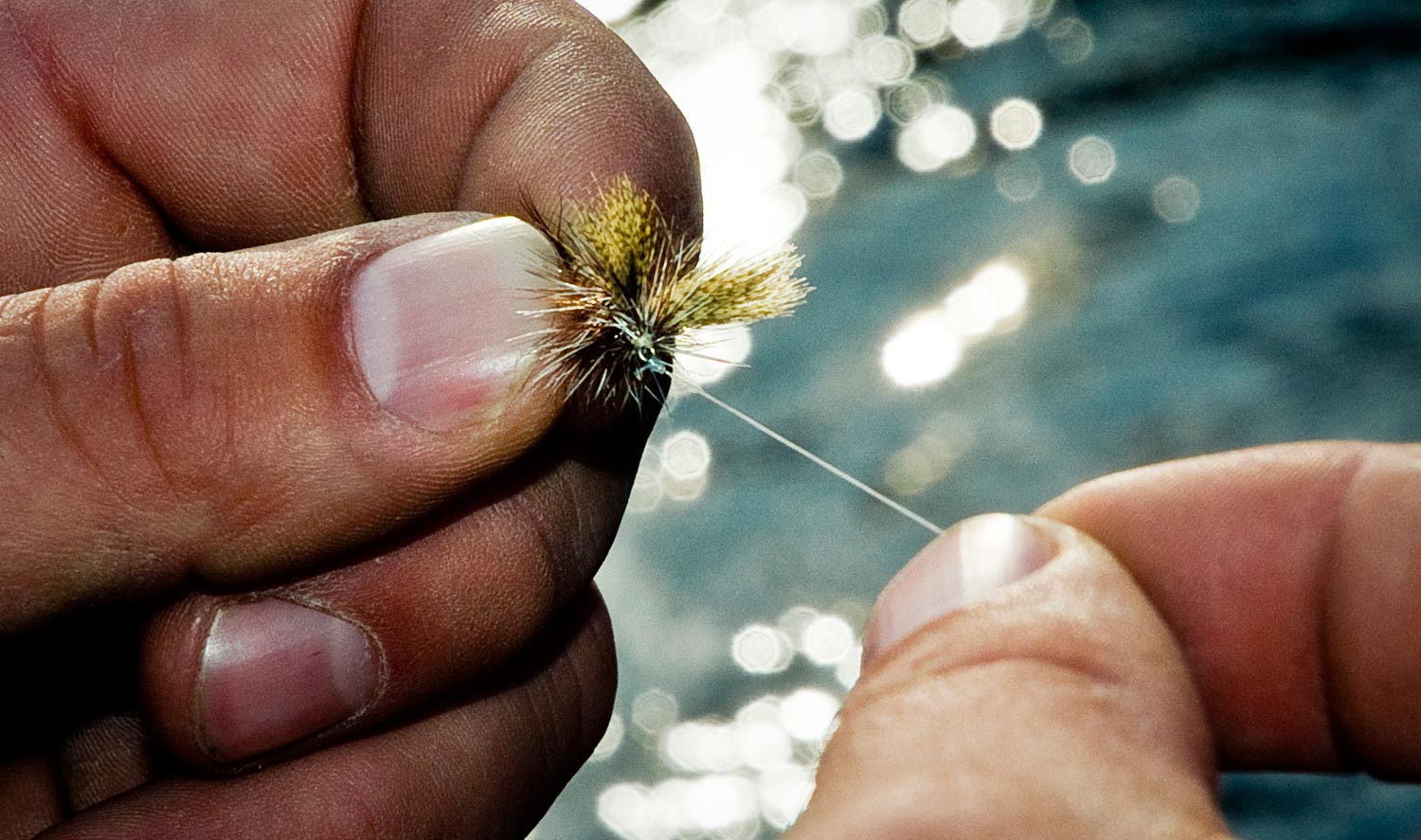
By Dan Frasier
What if I were to tell you there is no such thing as a trout fly?
A few days ago my good friend and fly designer Steve Martinez posted a link to one of his flies that Orvis carries; his Frankenstein Sculpin. I love this fly, but his comment intrigued me. He wrote; “Although I designed this fly for carp, it has been a killer smallmouth fly this year here on the Great Lakes.” No doubt that’s a true statement. It’s a killer fly. But my first thought was, “Well, duh. It’s a fly that intends to look like a Goby, the major baitfish on his part of the Great Lakes. Of course it works for anything eating them.” And that is when it occurred to me; We’ve been doing it all wrong.
In my book, The Orvis Beginners Guide to Carp Flies, I emphasize repeatedly that there is no such thing as a carp fly. There are flies, designed to look like certain foods, that work where carp eat those things. If you don’t match the pattern with the food in the area that carp are eating, you’re SOL. Carp aren’t special in this way. Trout flies work under the same premise. An Elk-hair Caddis works where trout are eating caddis and doesn’t where they are eating scuds. And, an Elk-hair Caddis works on carp that are eating caddis and doesn’t where they are eating Gobies. So, is the Elk-hair Caddis a trout fly? Or is it a fly that works on fish eating caddis? I think the answer is obvious.
Yet when I look through any fly catalogue from the major manufacturers, the overriding theme seems to be to segregate flies by species. Wanna catch a pike? Better check out the pike flies. Fishing for smallies? Turn to the bass section. We ignore the fact that these species key on certain foods at certain locations just as much as trout do. We also ignore that many different species in that location will be all eating the same food organism; that a hex fly will work on smallies eating hexes just as well as it does for trout eating hexes. That’s why flies created for one species are frequently used by experienced anglers for others.
The experimentation and expansion of the species anglers chase with the fly seems to be increasing at an exponential rate. No longer do you hear talk of certain fish species being lesser than others. People celebrate catching panfish without apology. Carp are the obvious poster child but all species seem to be looked at as something worth chasing. From gar to whitefish to musky, the world of opportunities is evolving within flyfishing, and for that reason we need to change the way we categorize flies. It’s time to
Read More »